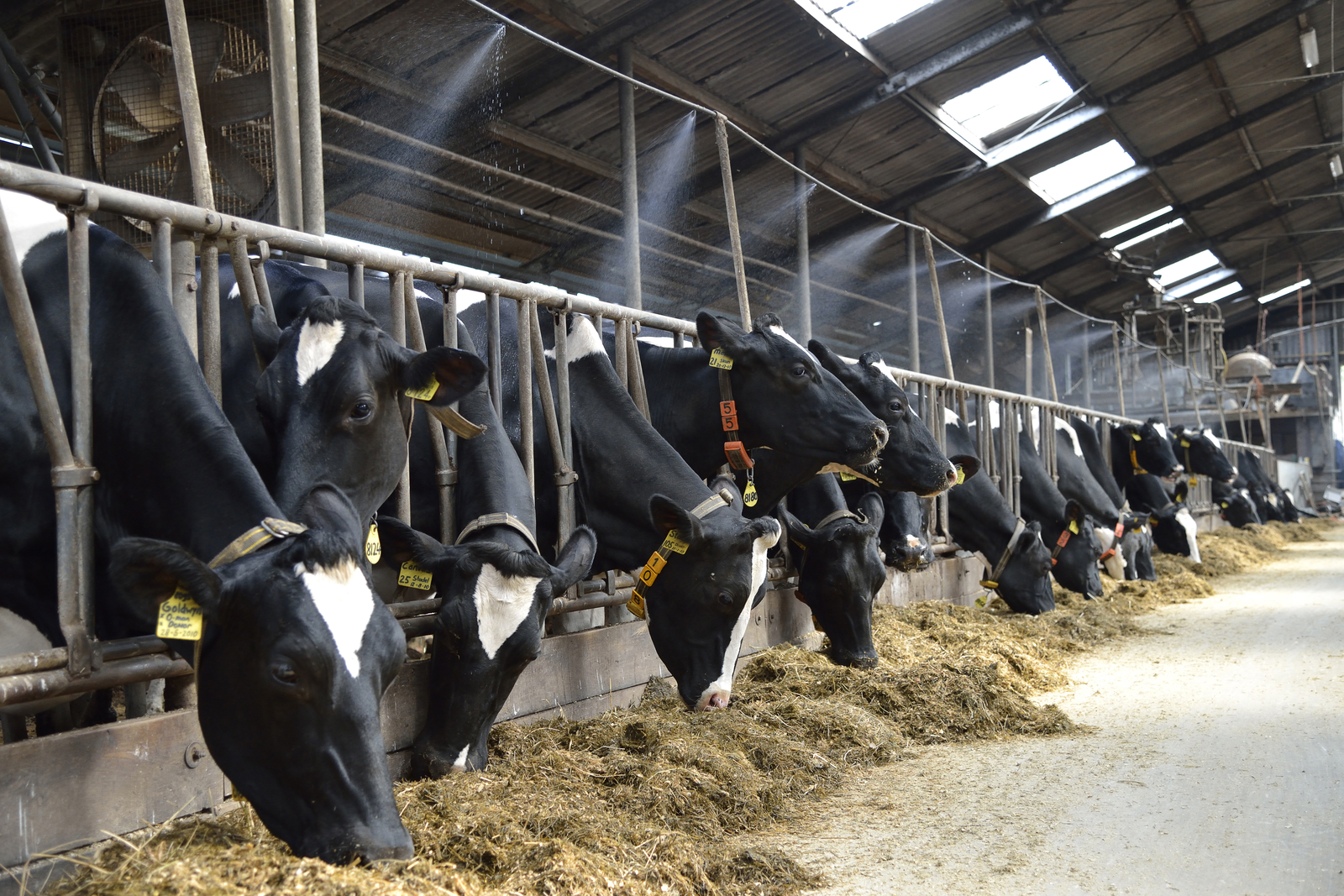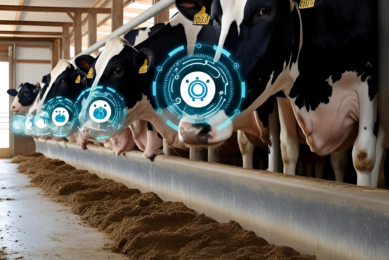Application of heat stress knowledge in dairy

In the US, losses of 1-1.5 billion dollars are attributed to heat stress impacting dairy cows. As heat stress occurs much earlier and more prominent with high producing dairy cows, the need to focus on heat stress increases, even more so because the development of dairy seems to be greater in (sub)tropical areas of the world.
By Marco Rebollo and Jeffry DeFrain, research nutritionists, Zinpro*
Heat stress is an extreme condition in which the animals are unable to dissipate excessive heat stored in their bodies caused by hot weather. Standard behavioural, psychological and biochemical thermoregulatory mechanisms are not sufficient to release the heat leading to reduced feed intake, reduced fertility and the consequent decline in performance.
With the use of advanced technology, farmers have been able to adapt their facilities to improve comfort: providing shade, increasing airflow and improving evaporative heat loss. Thermo-tolerance is an interesting topic that has been studied by geneticists, but will still take some time to achieve an effective solution.
Acclimation is also a resource that naturally happens when animals are born and grow in hot weather. Some producers intentionally expose their animals to artificially created hot conditions to prepare them before the hot season in order to prevent heat stress losses.
Adverse effects
Heat stress is one of the leading causes of decreased production and fertility across the world. It occurs anytime there is an imbalance between heat production and heat loss to the environment. Heat stress has long been known to affect cow comfort, milk yield, milk quality and composition, rumen health, growth and reproduction, which ultimately impacts animal well-being and dairy profitability.
The impact of heat stress on grazing dairy cattle performance includes changes in grazing patterns and therefore feed intake, negative effects on reproduction, increased lameness and immune dysfunction.
Feed formulations
Several heat abatement strategies exist depending upon the intensity of the operation including modifying the milking and feed schedule to accommodate cooler parts of the day, holding pen cooling, fly control, high-pressure mist systems attached to pivots, shade structures and the provision of ample quantities of water.
In addition, the quality of water has been shown to affect performance during heat stress especially total dissolved solids, sulphates, chloride, sulphates + chloride, manganese and iron. Modifications to both macro and micro mineral nutrition are important means to compensate for mineral losses and imbalances that occur during heat stress. Heat stress of grazing dairy cattle can be successfully managed using research proven technologies known to alter both the environment as well as the biology of the cow.
From a nutritional point of view, changes in feed formulations have been useful in reducing heat production (reducing energy and/or reducing the fibre content in ruminants diet) with the adequate supply of essential nutrients for production – especially a good balance of amino acids.
Besides increasing the supply of some vitamins like vitamin A, C and ER, minerals like zinc (Zn), manganese (Mn), copper (Cu) and chromium (Cr) have also proven to reduce the negative impact caused by a stress condition and compensate imbalances created.
Even considering the use of protective facilities and auxiliary control devices, producers experience high economic losses when high humidity is present or heat waves are hitting their production complexes.
The best approach is to use all the elements available – considering the assortment of facilities, installing proper equipment and control devices. All of which being designed by qualified professional agricultural engineers. Also, the nutritional approach should be considered, as well as trying to take some advantage of acclimation. Common sense and customised management should be used along side technology for the best performance.
Reduced activities
During heat stress, cows display reduced activity, reduced dry matter intake (DMI), increased respiratory rate, sweating and seeking shade. The primary heat dissipation mechanisms become less effective as temperature rises more on the evaporative cooling in the form of sweating and panting.
In high relative humidity (RH) conditions this means that cooling is restricted to limited times in a day, then the deficiency in heat loss leads to reduction in dry matter intake and consequently lower milk production. The critical values for minimum, mean and maximum thermal humidity index (THI) obtained in a study were 64, 72 and 76 respectively.
It is difficult to separate what influences reduced milk production – either low feed intake or direct effect of heat on hormones. Thyroid hormone levels are reduced by hot weather and therefore metabolic activity is reduced. Respiratory alkalosis derived from prolonged panting later becomes metabolic acidosis by the compensatory loss of bicarbonates.
This affects the acid-base balance of the cow, especially when high grain feeds are fed. In one study done in Florida, US, milk yield declined by 0.2 kg per unit increase in THI when THI exceeded 72. The immune system can also be compromised during heat stress.
Actions to be taken
The following approaches are classified by the target objectives pursued when cows are exposed to heat stress conditions.
The use of shade is an important resource to mitigate heat stress. Shade is a requirement in any environmental management programme for dairy. In an experiment cows under shade yielded 10% more milk, had lower rectal temperatures and slower respiratory rates.
It is recommended to provide shade in all areas, 4.5 to 5 square metres per cow oriented to cover most of the sun path during the hottest season. It can be provided either by solid roofs or by sheds. Feeding and watering areas should provide a shade refuge – holding pens, maternity pens, cows in lactation, managing areas and if possible also pathways.
Reformulate diets to account for reduced DMI, adjust increased requirements to cope with heat, reduce heat increment and avoid any excess in nutrient supply. Avoid excess nitrogen as energy might be distracted to produce NH2. Feed low fibre diets since acetate is not efficiently used in hot weather conditions.
Low forage and higher concentrate diets increase total DMI, so measures to manage a low DMI should be taken while providing the right amount of nutrients. To compensate this, the dietary neutral detergent fibre content needs to be adjusted to keep DMI at the desired level.
Reduced DMI requires an increase in the dietary mineral concentrations. Cation and anion should be increased (Na and K), as well as trace minerals (Z, Mn, Cr and Cu) to reinforce the antioxidant status and also to prevent problems derived from tissue weakness like pododermatitis.
In facilities with low mechanised cooling capacities, try to feed cows at a time when temperature is comfortable, early and late in the day. Provide a well-balanced diet with an accurate energy supply calculated according to the production stage and weather (DMI).
Mechanised ventilation has shown to be a useful resource to improve comfort, especially when combined with the use of sprinklers or foggers. Fans running at 6.5 to 9.7 km per hour, depending on the season and facilities, would provide sufficient cooling. Fans should be placed at the most efficient height (2.40 to 2.50 m). Fan companies provide the service of calculating the optimal capacity for the area.
Frequent maintenance to fans is also essential. All must be good working order before the hot season starts. A thermostat should be calibrated and cleaned frequently.
The use of sprinklers on the cows has shown to provide comfort as they increase their evaporative heat loss. Low pressure coarse droplets sprinklers (1.8-2.8l per minute, 1.25l per cow) are preferred, as the less the air is moving the more times the cow needs to be soaked. Once the cow is wet, time should be allowed for the water to evaporate. Humid weather requires more frequent soaking. An 11.6% improvement in milk yield was obtained when cows were sprayed for 1.5 minutes every 15 minutes. Give proper maintenance to nozzles and flush pipes.
Care must be taken to avoid manure accumulation creating muddy areas. Due to metabolic acidosis that develops during heat stress, vasoactive changes usually weaken claws (hooves). Lameness can result from the softening and later wear of the claw.
Provide full water access (linear water access: 1.0-1.2m per cow), preferably in shaded areas, in free stall barns and parlour exit lanes. Keep water tanks clean and check water flow rates at peak hot times. When providing cooling ponds, allow 4-5 square meter per cow. Downside is of course the tremendous amount of water use.
Supplementation of vitamins A and C and trace minerals lost and depleted during heat stress, would be helpful. Minerals can be provided from high bio-available sources like complex trace minerals, Zn, Cu, Mn and Cr. This would also help to reinforce the immune system and reduce infectious problems. By providing sodium bicarbonate to replenish the carbonates lost in the urine would also prevent metabolic acidosis.
It is desirable that animals have the benefit of being exposed to lower temperatures during night time.
Despite high ambient temperatures during the day, a cool period of less than 21o Celsius for three to six hours will minimise the decline in milk yield.
Summary
To summarise, utilisation of management as well as nutritious strategies can significantly reduce heat stress with lactating dairy cows. Careful consideration should be given to water quantity and quality, feed and micronutrient nutrition before and after heat stress.
References are available on request.
* This article is an edited version of a presentation by Jeffrey DeFrain, research nutritionist, Zinpro Corporation, at the Global Feed and Food Congress in South Africa, and an article by his Zinpro colleague Marco Rebollo, which was first published by AFMA Matrix and re-used with permission.











